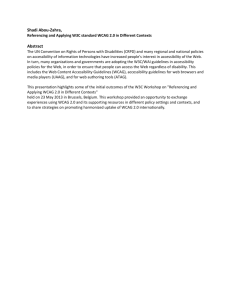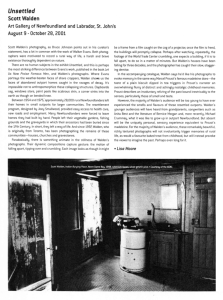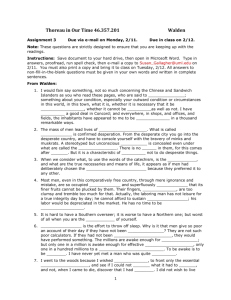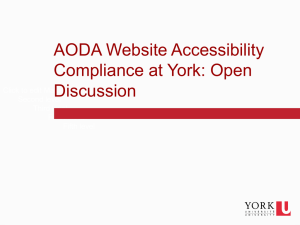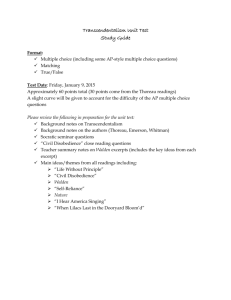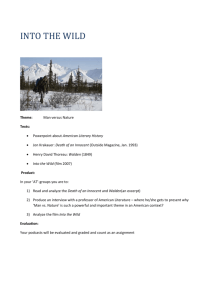File - Home
advertisement
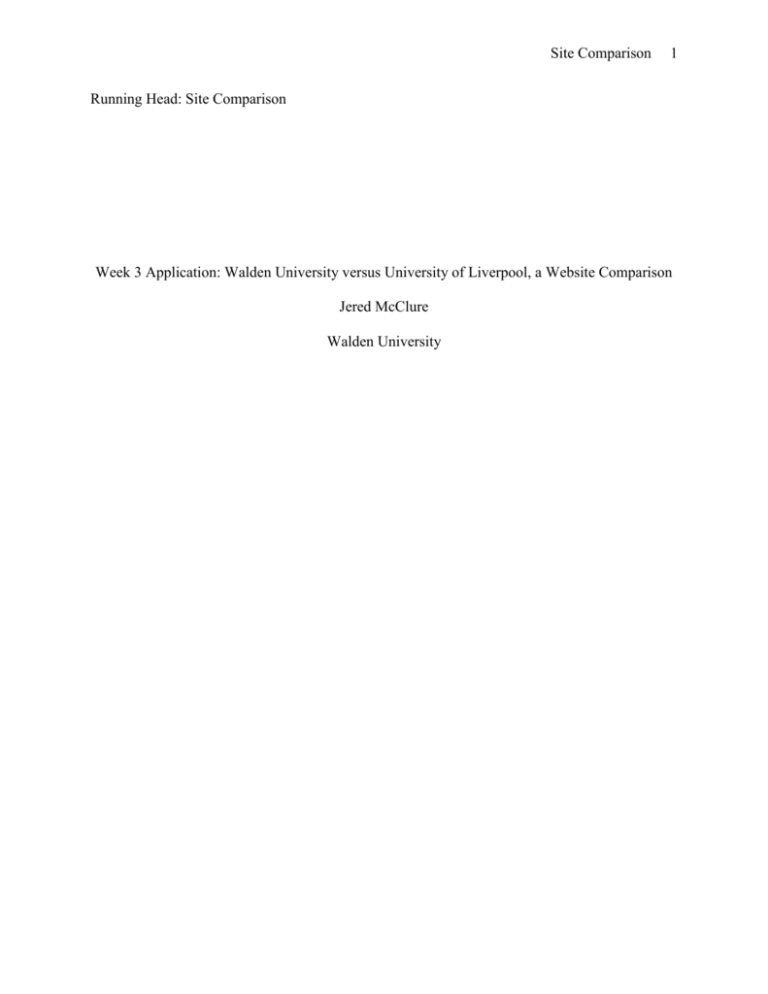
Site Comparison 1 Running Head: Site Comparison Week 3 Application: Walden University versus University of Liverpool, a Website Comparison Jered McClure Walden University Site Comparison 2 Week 3 Application: Walden University versus University of Liverpool, a Website Comparison In today’s world of ubiquitous online presence, developers need to keep in mind disabled users accessibility when building their sites. Not having an accessible site means a portion of their user base will be unable to access their site’s content. Fortunately, W3C offer guidelines on how to build accessible sites. Using the Web Content Accessibility Guidelines (WCAG) 2.0 this paper reviews two university websites, the University of Liverpool and Walden University, to see if they follow the WCAG principles (University of Liverpool, 2012) (Walden University, 2012) (W3C, 2008). The University of Liverpool’s website is simple and elegant when it comes to its visual display. The home page does not overload the user with too many details and, initially, the color contrast ratio is high enough that color blind users should have no issue (W3C, 2008, p. 1.4.3). Additionally, the top navigation bar is the same across the entire site. This means users do not need to relearn the UI every time the go to a new page. However, while pages are keyboard accessible, color schemes make it hard to tell where the cursor is located. This goes against WCAG points 1.4.1 and 2.4.7, the contrast of the cursor is not high enough for visual identification making the cursor indistinguishable (W3C, 2008). Using the accessibility browser WebbIE, the site is shown to be well configured, with an index link at the top of the home page. Meaning, navigating through the site using a screen reader should be no problem. However, login links for students and teachers are misleading. To signify that they are links for logging into the site, they only use a small graphic in the shape of a lock. When using WebbIE this does not show up, meaning users are unaware that the Staff and Student links are for logging into the site. In the 1.1.1 of the WCAG, a level A Site Comparison 3 site, meaning the most basic of accessible sites, should have a text alternative to all non-text content (W3C, 2008, p. 1.1.1). Furthermore, certain links do not work in accessibility browsers, for example, the links for Website and Courses. There are also some links on the site which are not very descriptive, an example is on the home page where an accessibility browser is presented with: Link: 1 Link: 2, Link: 3. It is not possible for a user to know what or where those links go, without clicking on them first. The WCAG clearly defines that a level A site should clearly define “the purpose of each link… from the link text alone or from the link text together with its programmatically determined link context” (W3C, 2008, p. 2.4.4). Walden University’s website is visually pleasing with contrast ratios high enough for visual identification, as well. The overall theme of the site is repeated across all pages, meaning the learning curve is small for new pages. Also, presentation of data does not overload the user, although there is more presented data then the University of Liverpool’s site. Unfortunately, the Walden University website is decidedly inaccessible to disabled users. There is no support for accessing content within rollup panes which exist on the “Degree Programs” page. Also, items in the navigation bar’s dropdown menu are inaccessible. This, in essence, defies all of section 2.4 of the WCAG, which outlines how accessible navigation should take place on a website (W3C, 2008, p. 2.4). When viewing the Walden University site in an accessibility assistive browser, there is no way to bypass the repeated content at the top of each page. This, once again, goes against section 2.4 of the WCAG. Likewise, some links will not work at all, specifically, the Apply link which allows a prospective student to submit an application to the school. Site Comparison From an initial perspective, accessing either of these university sites as a disabled user is an exercise in frustration and futility. It would be easier to define what the sites do cover via the WCAG rather than what they do not. As such, the following is a table comparing and contrasting both sites against the guidelines of the WCAG: 4 Site Comparison 5 While technically Walden University is the winner in terms of accessibility, with both sites having no representation in six of the twelve categories, neither site is actually accessible for impaired users. This analysis shows the massive faults both sites possess in terms of thinking about their user base. It is certain, if a disabled user were to attempt to use either of these sites, it is likely they would have given up in frustration before applying to either university. What a shame that education is hindered by technology, rather than assisting in the increased social expansion of educated individuals. Site Comparison Reference University of Liverpool. (2012). Home. Retrieved November 3, 2012, from University of Liverpool: http://www.liv.ac.uk/ W3C. (2008, December 11). Web Content Accessbility Guidelines (WCAG) 2.0. Retrieved October 29, 2012, from W3C: http://www.w3.org/TR/2008/REC-WCAG2020081211/#perceivable Walden University. (2012). Home. Retrieved November 3, 2012, from Walden University: http://www.waldenu.edu 6
